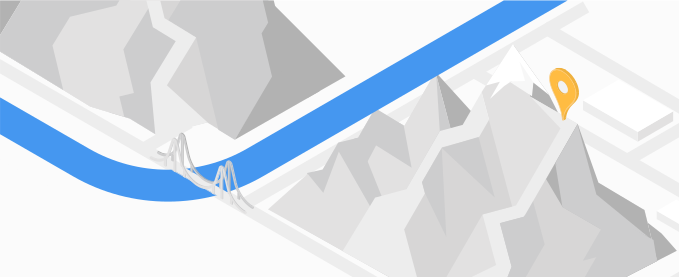
API Elevation — это служба, которая возвращает данные о высоте для местоположения на Земле или выборочные данные о высоте вдоль маршрутов.
Зачем использовать Elevation API
С помощью Elevation API вы можете разрабатывать приложения для поддержки ваших клиентов при выполнении действий, чувствительных к высоте, приложений позиционирования или приложений для малой съемки, которые включают высоты и изменения высот вдоль маршрутов. Например, вы можете предоставить данные о наборе и потере высоты, чтобы улучшить спортивное приложение для таких видов деятельности, как пеший туризм, езда на велосипеде или подводное плавание.
Что вы можете сделать с помощью Elevation API
С помощью Elevation API вы можете включать данные о высоте в свои приложения или на карту. Например:
- Получите высоту для определенного места.
- Рассчитайте разницу высот вдоль маршрута или между двумя точками.
Как работает API Elevation
API Elevation принимает запрос в виде закодированного URL-адреса с координатами широты и долготы, представленными либо в виде отдельных местоположений, либо в виде серии местоположений на пути. Например, этот запрос запрашивает высоту центра Денвера, штат Колорадо, указывая возврат в формате JSON.https://maps.googleapis.com/maps/api/elevation/json ?locations=39.7391536%2C-104.9847034 &key=YOUR_API_KEY
Сервис определяет высоту по предоставленным координатам. Он также интерполирует высоту для местоположения без высоты, предоставляя среднее значение, полученное из четырех ближайших местоположений, которые предоставляют данные о высоте. Наконец, он определяет общее разрешение местоположения.
Ресурсы
В следующей таблице приведены ресурсы, доступные через Elevation API, а также данные, которые он возвращает.
| Ресурсы данных | Данные возвращены | Формат возврата |
|---|---|---|
| Координаты широты/долготы Вы можете предоставить данные в виде набора из одного или нескольких местоположений или в виде серии вдоль пути. Вы также можете предоставить закодированные координаты. Передать до 512 координат. | API Elevation предоставляет высоту в метрах относительно местного среднего уровня моря (LMSL). Высота может быть возвращена как положительные или отрицательные значения, как показано ниже:
|
|
Как использовать API возвышений
| 1 | Настройтесь. | Начните с настройки проекта Google Cloud и выполните следующие инструкции по настройке. |
| 2 | Попробуйте запрос на повышение прав | Получив ключ API, вы можете начать тестирование Elevation API прямо из браузера. Подробности см. в разделе «Примеры запросов» в руководстве по началу работы . |
| 3 | Составьте более сложный запрос | После настройки проекта попробуйте запрос, который предоставляет данные о местоположении по пути. Подробности см. в разделе Указание путей . |
| 4 | Понимать основы ответа | Изучите ответы данных о высоте, чтобы подготовиться к использованию данных о высоте для вашего приложения. Подробности см. в разделе «Ответы о высоте» . |
| 5 | Включите данные о высоте в свое собственное приложение! | Вы можете использовать данные о высоте для улучшения приложений, основанных на местоположении, например приложений для занятий спортом или для данных опросов. |
Доступные клиентские библиотеки
Вызовите этот API на выбранном вами языке через одну из следующих клиентских библиотек:
- Java-клиент для сервисов Google Maps
- Клиент Python для служб Google Maps
- Клиент Go для сервисов Google Maps
- Клиент Node.js для сервисов Google Maps
Клиент Java, клиент Python, клиент Go и клиент Node.js для служб Google Maps — это клиентские библиотеки, поддерживаемые сообществом, с открытым исходным кодом по лицензии Apache 2.0 . Загрузите их с GitHub, где вы также можете найти инструкции по установке и пример кода.
Что дальше
- Начните использовать Elevation API : перейдите к разделу «Настройка проекта Google Cloud» .
- Попробуйте получить данные о высоте на основе пути : перейдите к разделу «Указание путей».
- Следуйте рекомендациям : перейдите к разделу «Рекомендации по использованию веб-служб» .

